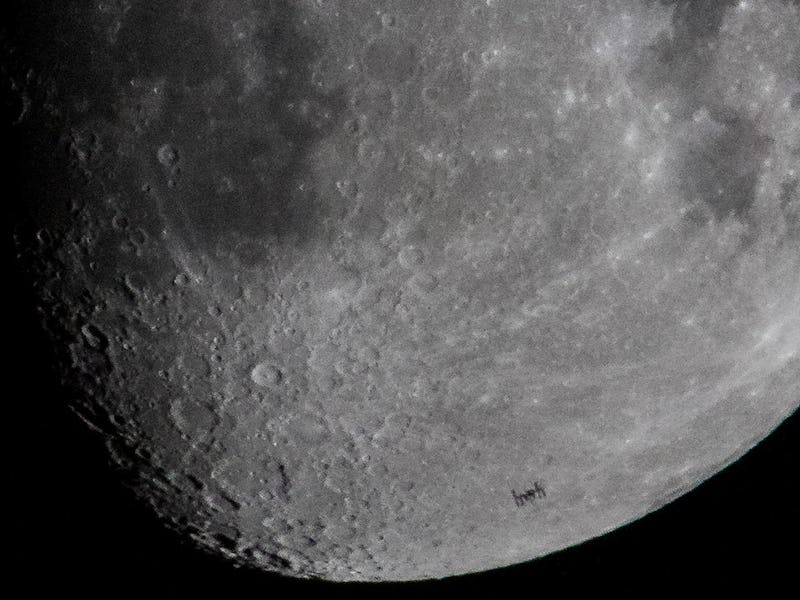This is how much radiation astronauts will be exposed to on the Moon on a daily basis
A new study is the first to measure the radiation levels on Earth's companion satellite.

Space agencies ambitions are set on the Moon. NASA is preparing to send humans back to the lunar surface by the year 2024 as part of the Artemis mission, which aims to set up camp on the Moon for future exploration of other, far-off worlds.
But bouncing across the Moon's surface poses a serious health risk to astronauts. That's because life on the Moon exposes them to large amounts of space radiation. And thanks to a new study, scientists finally understand just how much radiation any human lunar inhabitant would be exposed to every day. Ultimately, the findings could help mitigate these effects, and make it more possible for humans to travel through space.
The study was published Friday in the journal Science Advances.
Unlike Earth, the Moon lacks an atmosphere or a magnetic field to protect it from space radiation. As a result, the level of radiation on the Moon is very close to that recorded in the middle of space.
Using data from China's Chang'E 4 lander mission, which landed on the far side of the Moon in 2019, a team of scientists from China and Germany have completed what they claim is the first accurate measurement of the radiation levels on the lunar surface.
How will future astronauts protect themselves from radiation on the Moon?
They found that the Moon experiences an average daily radiation dose equivalent to 1,369 microsieverts per day, which is about 2.6 times higher than the amount the crew of the International Space Station is exposed to on a daily basis. Sieverts are a unit used in the measurement of how low levels of ionizing radiation affect human health.
"The radiation exposure we have measured is a good benchmark for the radiation within an astronaut suit," Thomas Berger, a researcher at the German Aerospace Center in Cologne, and co-author of the study, said in a statement.
Every hour on the Moon, astronauts would be exposed to about 60 microsieverts, which is 200 times higher than that experienced on Earth.
"We humans are not really made to withstand space radiation," Robert Wimmer-Schweingruber, a researcher at Kiel University, and co-author of the study, said in a statement.
Space radiation either comes from the Sun as it emits solar flares and big bubbles of plasma into space at high speed, or cosmic rays, which come from outside of the Solar System. They can originate in supernovae, the explosions caused by the death of a massive star, or from supermassive black holes and other cosmic phenomena.
Although humans have been venturing out into space for over 50 years, very little is understood about the effects of space radiation on human health.
Space radiation pierces through molecules of DNA, altering or permanently damaging them, according to NASA.
Figuring out exactly how much radiation astronauts will be exposed to is the first step in developing ways to mitigate the effects of radiation on the human body.
Some of the ways suggested so far have involved the astronauts shielding themselves from the radiation using soil from the Moon, or wearing protective vests such as AstroRad, which is currently being tested for journeys to the Moon.
A recent study also suggested astronauts using lunar caves as a refuge on the Moon.
Abstract: For over 50 years, Kiel University has investigated to origin of space radiation, how it spreads through space, and how dangerous it is for astronauts or possible extraterrestrial life. In addition to the device from Kiel on the moon, another instrument from Kiel has been measuring the radiation on Mars since 6 August 2012. On 10 February 2020, three more devices from Kiel were launched on the ESA space probe Solar Orbiter, which measure the origin and spread of the radiation. These measurements are important for understanding space weather, and over much longer time periods also so-called "astrobiology". In this scientific field, scientists investigate if and how life could emerge and spread on other celestial bodies.